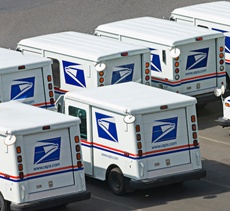Amazon furthers Sunday delivery plans with sortation hubs
16 Aug 2014
Following its tie-up with the US Postal Service (USPS), Amazon is opening 15 sortation hubs across the US to further its Sunday delivery plans (See:Amazon ties up with US postal service for Sunday delivery).
 The initiative would help the postal service, with which the retailer had signed an exclusive arrangement, to boost revenues and drive up profits.
The initiative would help the postal service, with which the retailer had signed an exclusive arrangement, to boost revenues and drive up profits.
Loss-making USPS had been looking to package and parcel delivery, in recent years for positive growth.
Though USPS would be making the final delivery, the bulk of the sorting and organising would be done by Amazon. Industry insiders point out this was Amazon's way to exercise greater control over the delivery component of the overall operations.
The new sorting centres currently serve several markets including Dallas, Houston and further afield like New Jersey, Kentucky and inland southern California. Eight of the 15 total hubs planned are currently operational, with the rest expected to start by the year end.
Amazon Prime customers, who receive free shipping and have access to later order deadlines, as well as regular buyers who would need to pay extra for the privilege but will still have access to the extended delivery period, would be covered across major population areas under the hubs.
According to commentators, e-commerce companies averse to sharing revenue with Amazon for using its Marketplace platform and looking for operational independence could benefit from similarly building on their shipping strategy.
While Sunday delivery is not offered by FedEx and UPS, there are a number of, smaller operators that do. They point out that using a broad mix of carriers was generally a good practice as it not only helped cut costs based on the provider and specific service selected, but also helped crash delivery timelines.
Businesses that would like to leverage the model would do well to consider the use of multi-carriers shipping software to streamline operations.
A strong, diverse delivery network could not only better meet the needs of customers but could cut internal costs as well. Such arrangements also helped attract buyers to companies.
Small business owners have traditionally depended on USPS for the bulk of their shipments for small parcel delivery, cost effectiveness and transit time.
They point out that though FedEx and UPS counted as the right option for larger and heavier parcels, and also as FedEx and UPS offered volume discounts, most small business owners, however, did not qualify for significant discounts and were additionally burdened with home delivery fees and fuel surcharges.
Commentators point out that given the nationwide reach of the post office's infrastructure, Amazon had its work cut out. All Amazon needed to do was to resurrect the system.





















